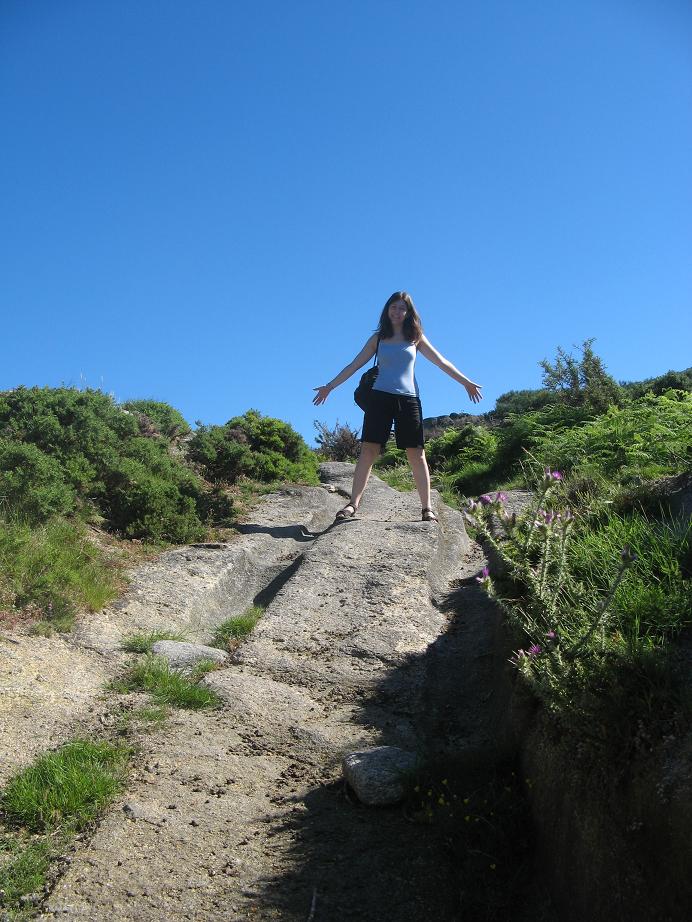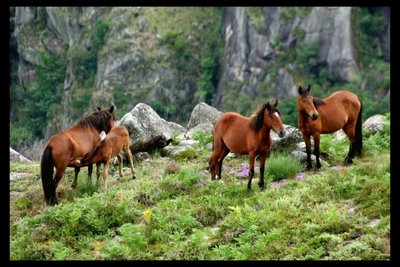The house is in the tiny village of Parades do Vale, near Arcos de Valdevez in the Lima valley. it sits at 500 metres above sea level on the shoulder of "Giao", a mountain in the Serra Soajo.
The village still has a number of families who rely on traditional subsistence agriculture, growing vines, maize and cabbages on small stone-walled plots joined by an intricate network of watercourses. The sheep, wide-eyed cows, goats and the occasional horse make a living from whatever grazing they can find, wandering during the day with bells round their necks and being brought back to the farmstead every evening. Many of the villagers are elderly. The scatter of modern houses around the village belong to a generation earning a living elsewhere and are not occupied all the time.

This way of life is what has given the countryside its character - grey granite arranged by nature or by man on steep mountainsides with many streams and rivers in deep channels forming the watershed for the rivers Lima and Vez. Many of the channels are too deep to have been cultivated and are thickly wooded and green all year round. Where the mountain is level it has been divided into small fields and wherever possible the usable area has been extended by terracing the slopes - many of them used for vines.

Once upon a time the landscape clearly supported a larger population, although it is hard to know how old the tumble-down stone structures are - 100 years, a 1000, or even older?
Only the very highest parts of the mountain - like those above the village - are not cultivated. These 'brandas' are grazed by both domestic animals and semi-wild 'garanno' horses. This area, like the valleys, is crossed by numerous paths, many of which are clearly very old and bear the marks of iron cart wheels, presumably pulled by oxen before the modern roads were built.

Just over the mountain (10 minutes by car) is the boundary of the National Park of Penede-Geres with one of the five "gateways" by which it is accessed. The park covers most of the Penedes and Geres mountain ranges where they form the boundary with Spain. It includes a large designated wilderness area (one of the largest in Western Europe) home to the Iberian wolf and the Imperial Eagle as well as many more common species.

If you drive down the mountain, rather than over it, you come to the busy market town of Arcos de Valdevez. Unlike the towns further downstream, Ponte de Barca and Ponte de Lima, tourism is peripheral to Arcos. It is proud of its status as the principal town of the municipality and is entirely Portuguese in character. There are plenty of shops and restaurants and a thriving weekly market.
You can continue to follow the river to its mouth at Viana do Castelo, 46 km downstream. Viana is the principal town of the Minho region. The road north follows the coast to the attractive border town of Caminha and the border with Spain.
